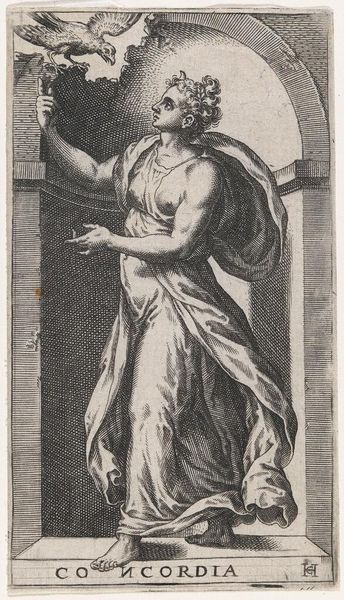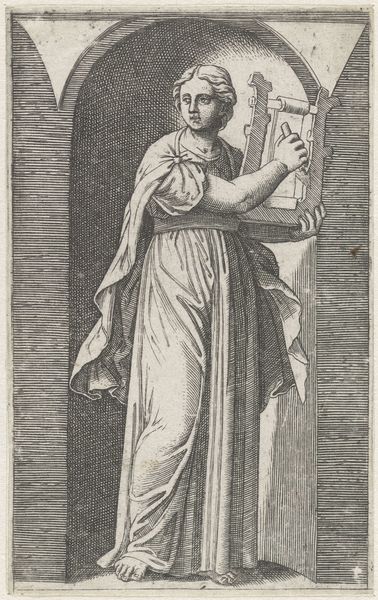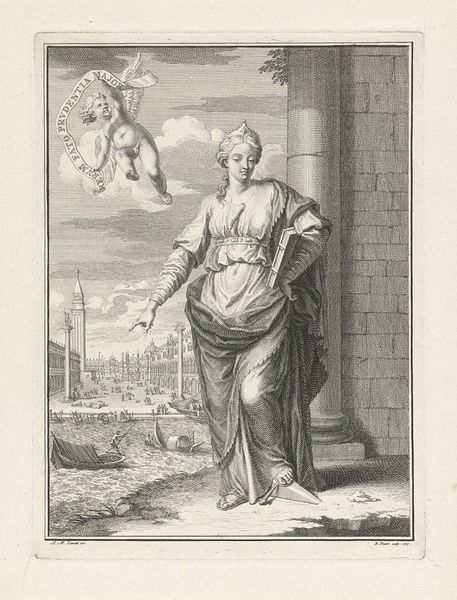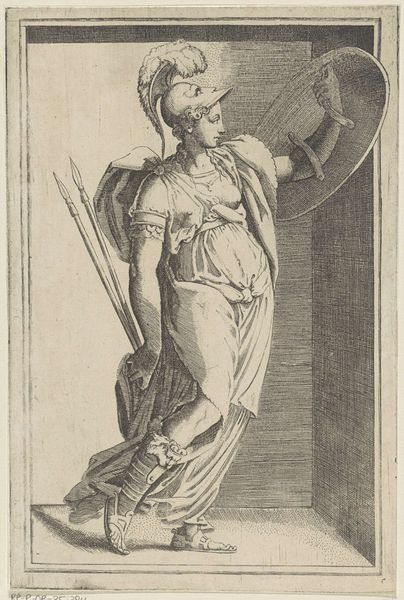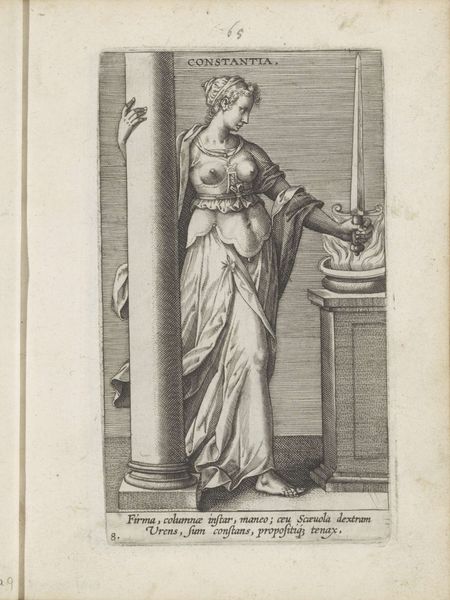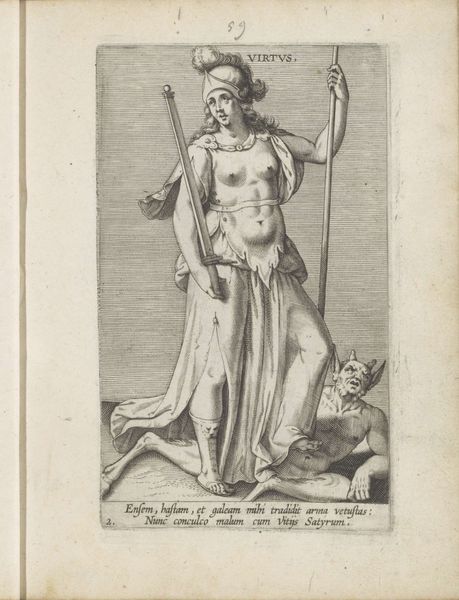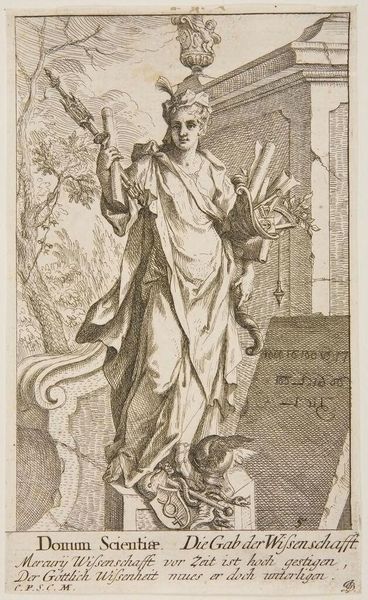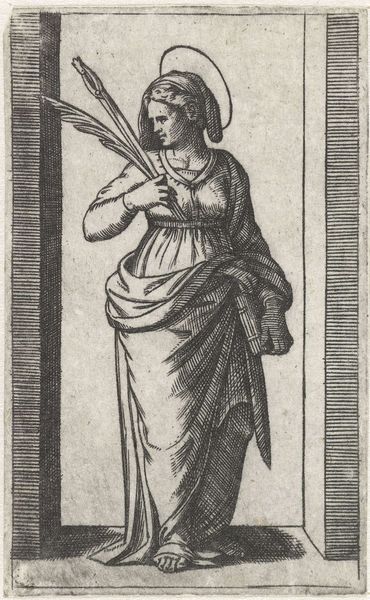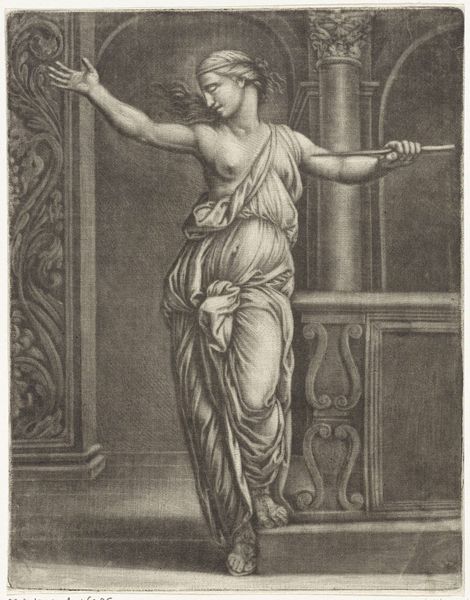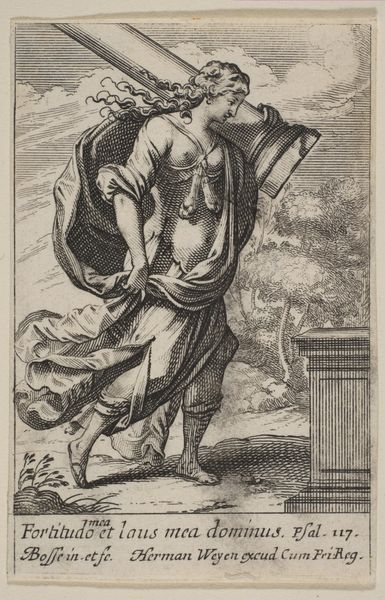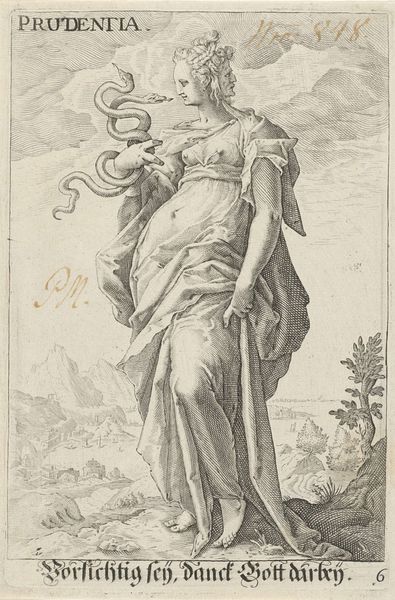
The Suicide of Lucretia 1509 - 1514
print, engraving
# print
#
old engraving style
#
caricature
#
figuration
#
form
#
line
#
history-painting
#
italian-renaissance
#
nude
#
engraving
Dimensions: height 212 mm, width 130 mm
Copyright: Rijks Museum: Open Domain
"The Suicide of Lucretia" was etched by Marcantonio Raimondi sometime between 1475 and 1534. The composition immediately draws us into Lucretia's tragic moment, framed within an architectural space that uses precise lines and controlled shading. Look at how the composition balances the interior and exterior, using the classical architecture to emphasize Lucretia's figure. The detailed lines of the engraving highlight the texture of her draped clothing, contrasting with the smooth expanse of her skin. The calculated use of shadow adds depth, enhancing the emotional weight of the scene. Raimondi’s skill in manipulating line and form creates a visually compelling narrative about virtue and despair. The engraving captures a pivotal moment, inviting viewers to contemplate ideas around morality, sacrifice and representation through its structured design. The use of engraving emphasizes clarity and precision, creating a dialogue between form and content that remains open to interpretation.
Comments
rijksmuseum about 2 years ago
⋮
The virtuous Lucretia is raped by the royal prince Sextus Tarquinius Superbus. Unable to live with the memory of this shameful act, she stabs herself to death. The Italian engraver copied the landscape with the little bridge at the right behind the desperate Lucretia from Lucas’ engraving of Susanna and the Elders (adjacent). He omitted the buildings in the background.
Join the conversation
Join millions of artists and users on Artera today and experience the ultimate creative platform.

